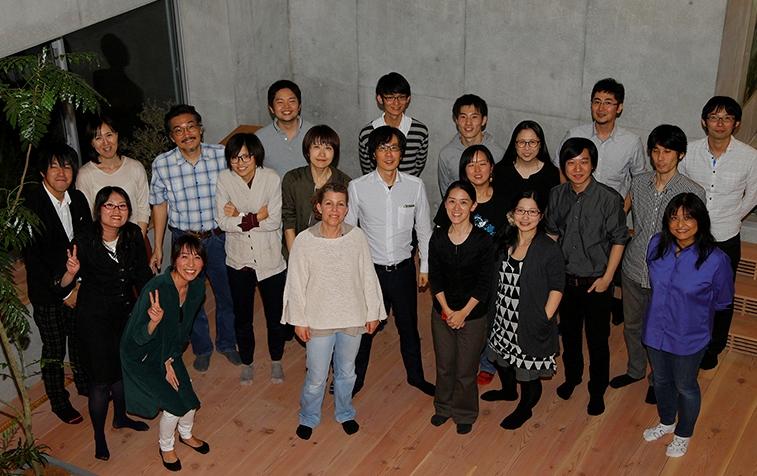Research News
Genetic Analysis Identifies Proteins Controlling Sleep in Mice

University of Tsukuba-led international researchers use genetic screening approach to identify mutations that affect sleep/wakefulness in mice; amount of rapid eye movement (REM) sleep and non-REM sleep shown to be regulated by NALCN and SIK3 proteins, respectively.
Tsukuba, Japan—Sleep is an essential animal behavior seen in both vertebrates and invertebrates. Mammalian sleep is made up of tightly controlled cycles of rapid eye movement (REM) sleep and non-REM sleep. Recent research has identified neural networks in different parts of the brain that switch us between wakefulness, REM sleep and non-REM sleep. However, the molecular mechanism regulating these switches was unknown.
Researchers centered at the University of Tsukuba examined mice carrying random mutations to isolate those with sleep/wake abnormalities. This large-scale screening process identified sleep phenotypes and mutated genes that revealed roles for two proteins in regulating sleep need and maintaining periods of REM sleep.
Previous work identified genes that control sleep in flies carrying random mutations, but equivalent experiments in mice are technically more challenging because of the requirement for measures of brain electrical activity in sleep/wakefulness and the fact that many redundant mechanisms are involved in sleep regulation.
The researchers used chemical mutagenesis to introduce random mutations into mice. Observations of the mice identified a mutant pedigree, named Sleepy, with an extended sleep time. This pedigree was shown to carry a mutation in the Sik3 gene, which encodes an enzyme (SIK3) expressed in neurons of the brain that controls other proteins.
"We noticed that Sleepy mutants showed an exaggerated response to sleep deprivation," first author Hiromasa Funato says. "Examining the brains of sleep-deprived mice revealed changes in the phosphorylation of amino acids within the SIK3 protein. These changes were disturbed by the Sik3 mutation in Sleepy mice, which is why they have an increased sleep need."
A second sleep phenotype was identified with a shortened and unstable REM sleep period. "This mutant pedigree, named Dreamless, carries a mutation in the Nalcn gene, which encodes an ion channel thought to control neuronal excitability," coauthor Chika Miyoshi says. "The Dreamless mutation causes increased ion conductance through the channel and increased activity of REM-terminating neurons, which is compatible with REM sleep instability."
Genes related to Sik3 in Drosophila and nematode worms were also shown to be involved in regulating the amount of sleep-like behaviors in these animals, while a mutation in a Nalcn-related Drosophila gene was previously found to control a circadian change in neuronal excitability. These conserved roles in invertebrate genes show the importance of controlling sleep in all animals.
"We hope that the discovery of these key genes is just the beginning of our long journey into the blackbox of sleep regulation," senior author Masashi Yanagisawa says. "It is amazing that we know almost nothing about the simple question of what is 'sleepiness' physically in our brain. We will start from these genes and try to solve the great mystery."
The article, "Forward-genetics analysis of sleep in randomly mutagenized mice" was published in Nature at DOI:10.1038/nature20142.

Original Paper
Funato H, Miyoshi C, Fujiyama T, Kanda T, Sato M, Wang Z, Ma J, Nakane S, Tomita J, Ikkyu A, Kakizaki M, Hotta N, Kanno S, Komiya H, Asano F, Honda T, Kim SJ, Harano K, Muramoto H, Yonezawa T, Mizuno S, Miyazaki S, Connor L, Kumar V, Miura I, Suzuki T, Watanabe A, Abe M, Sugiyama F, Takahashi S, Sakimura K,Hayashi Y, Liu Q, Kume K, Wakana S, Takahashi JS, Yanagisawa M., Forward genetic analysis of sleep in randomly mutagenized mice, Nature, DOI: 10.1038/nature20142
Related Contents
Forward-genetics analysis of sleep in randomly mutagenized mice (Nature DOI: 10.1038/nature20142)


